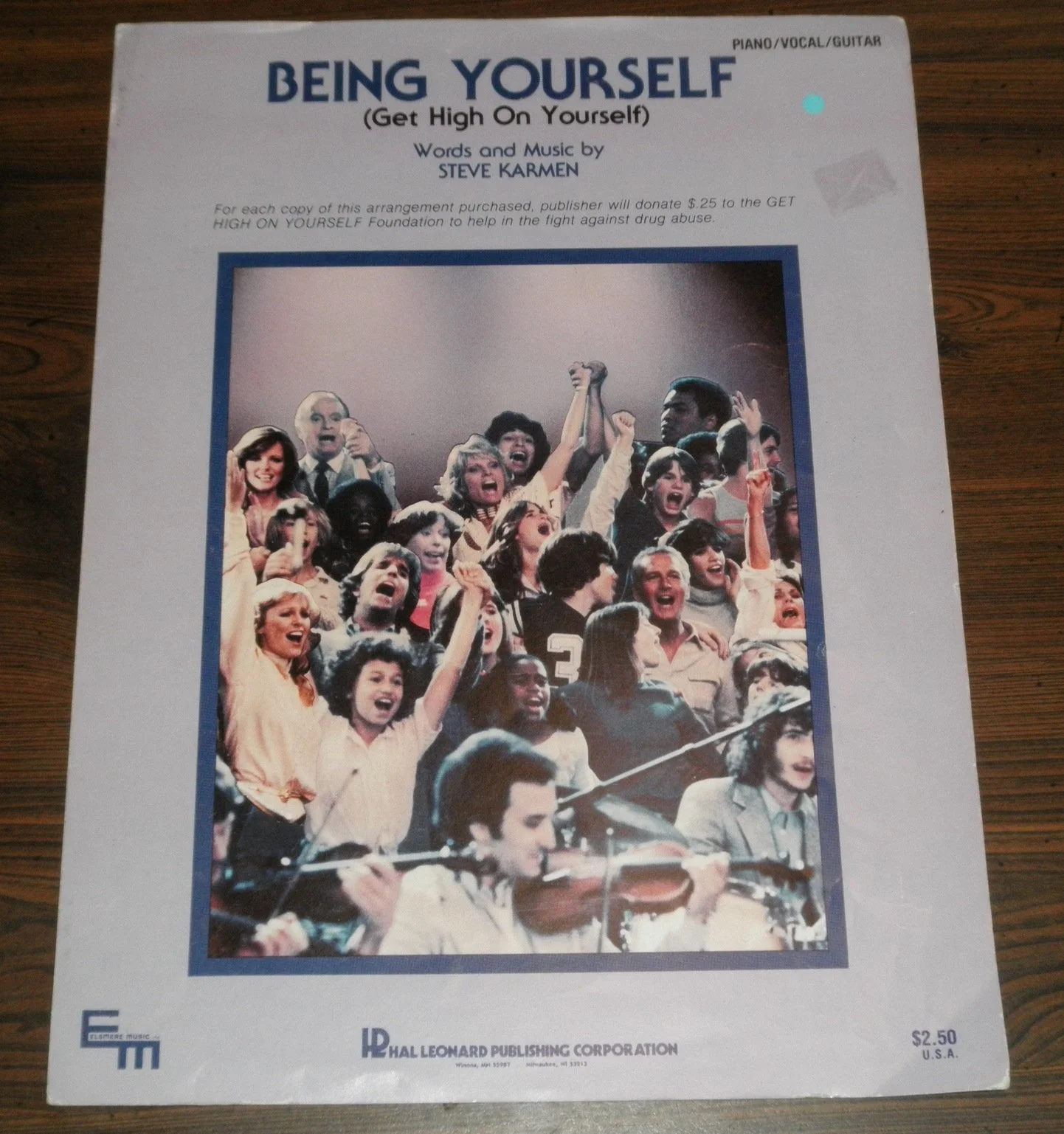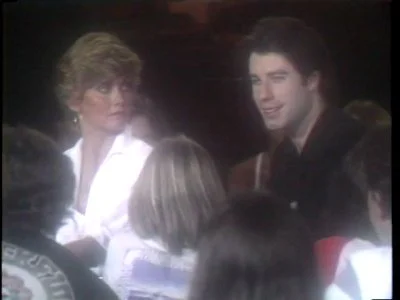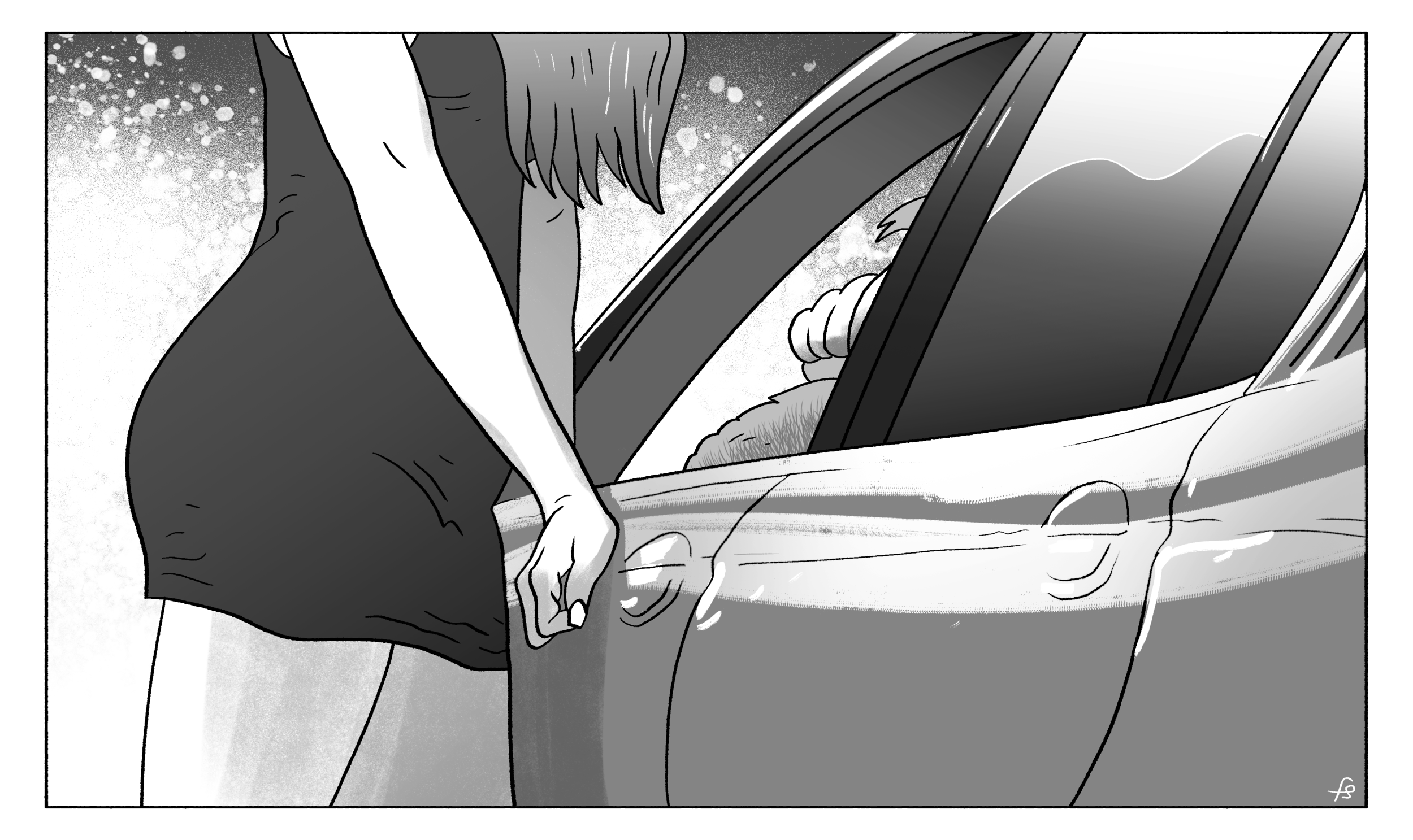Robert Evans Got High on Himself, and also Cocaine, in the Infamous Anti-Drug Special Get High On Yourself
For cultists of Robert Evans, film producer, actor, executive, author, national treasure, and bon vivant, the 1981 special Get High on Yourself occupies a small but major place in the great showman’s self-mythology.
In the film version of Evans’ memoir The Kid Stays in the Picture, the author disgraces himself by getting busted for cocaine trafficking. Even worse, Evans does not contact his mentor, Sidney Korshak, immediately to resolve the situation, irrevocably harming their friendship in the process.
But like a gorgeously tanned Phoenix rising from the ashes, the super-producer transformed a court order to create an anti-drug commercial as part of his punishment into a weeklong celebration of sobriety called Get High on Yourself he deemed, with trademark hyperbole, “The Woodstock of the 1980s.”
I chuckled long and hard the first time I saw a motley assemblage of TV stars and athletes badly group-singing an obscure anti-drug jingle christened one of the major cultural events of the Reagan era.
I laughed just as long and just as hard every subsequent time I came to the part in The Kid Stays in the Picture when Evans favorably compares a half-forgotten “Just Say No” anthem to a generation-defining concert from the 1960s.
I derived so much joy from Evans’ delusion that he’d created the “Woodstock of the 1980s,” whether society acknowledged it or not, that I never went through the bother of actually watching the special.
Then I was doing a podcast with my friend Alonso Duralde about The Kid Stays in the Picture and a surreal weekend I spent at the home of its subject, and he mentioned that Get High on Yourself was on YouTube and was every bit as gloriously insane as it seems.
Evans’ magical Rolodex and legendary charm attracted some of the biggest names in sports and entertainment, megastars like Paul Newman, Henry Winkler, Mark Hamill and Dorothy Hamill, Earvin “Magic” Johnson, Julius “Dr. J” Irving, and Bob Hope, but the biggest star is the Kid Who Stayed in the Picture, the Prince of Paramount himself, Mr. Robert Evans.
Henry Winkler jokes that the reason he’s there is because, “Bob Evans extorted money from my family” before gushing, “Bob Evans loves to say that there were more celebrities in one place for free than he could have ever gotten for one of his films, or all of his films combined.”
Possible murderer Robert Wagner, meanwhile, picks up a phone and, with a stiffness seldom seen outside of athlete cameos on Arli$$, woodenly insists, “Evans, if it has to do with kids, you got me!”
A comeback-hungry Evans brought together the biggest stars in the world in one studio with telegenic kids so that they could deliver the straight dope that drugs like marijuana and cocaine had no place in 1980s pop culture or the entertainment industry.
The Kid Stays in the Picture icon was too much of a hedonist to evangelize on behalf of something as dreary as boring old sobriety, so he offers a very 1980s substitute. Instead of getting high on illicit substances, Evans and his celebrity friends admonish children to get high on their own abilities, on their creativity, optimism, and irrepressible energy.
The legendary narcissist invites children and adults alike to get high on their own egos and to pursue the natural exhilaration that comes with spectacular achievement. After all, what drug high could possibly compare to winning a gold medal in the Olympics, flying to the moon, or producing the Woodstock of the 1980s?
To that end, the special randomly inserts quick shots of Caitlyn Jenner at the Olympics, a NASA ship landing on the moon, and, for reasons I cannot begin to fathom, an image of John Wayne smiling alongside footage of celebrities and singers.
Like so much anti-drug propaganda, Get High on Yourself feels like the product of people who were high on illegal drugs. Everything about it feels redolent of cocaine abuse or the “pink cloud” of ecstasy that sometimes accompanies the early stages of sobriety.
Only someone seemingly on powerful stimulants would be delusional enough to imagine that a clamorous anti-drug ditty written by a composer of commercial jingles merited not just a thirty-second or minute-long commercial or even a music video but an entire HOUR of hopelessly padded prime-time television.
The special’s grandiosity and a messianic sense of purpose feel cocaine-induced, as does the live-wire energy and jittery excitement of everyone involved.
Evans promises that Get High on Yourself is no mere song or special but rather a “new spirit” sweeping the nation. From the vantage point of 2021, that “new spirit” feels suspiciously drug-induced.
The producer of Chinatown set out to save the children and his career simultaneously by showing himself in action, putting together a star-packed spectacle the likes of which the world had never known.
A producer’s job is not without complications. For example, Bob Hope threatens to pull a no-show until he learns he’ll be standing next to Cheryl Tiegs. All it takes is the promise of being within groping distance of a genuine Sports Illustrated sex symbol to get Hope to spend a few hours in the company of the super-famous, scoring major media attention and good publicity.
Get High on Yourself provides an opportunity for impressionable children to learn, straight from noted pill enthusiast Burt Reynolds himself, that, despite what the entire history of television comedy might suggest, smoking marijuana and writing comedy simply do not mix. That is, of course, unless the audience for the jokes from stoned writers was also totally baked, which was pretty much the case from roughly 1968 to 1986.
Get High on Yourself should end after a half hour once the title song has been performed by movie stars, athletes, musicians, and adoring children.
But, like the cocaine addict it so often resembles, Get High on Yourself is just too goddamn wired and amped-up to go home quietly, so it lingers on inexplicably for another half hour.
For reasons known only to Evans, we segue directly from a haggard-looking drug casualty talking about shooting heroin alongside a friend who died of an overdose in front of him to a raucous concert hall where a bare-chested, long-haired Ted Nugent, the Motor City Madman himself, is holding court, looking like a greasy hippie outlaw messiah.
Nugent treats the audience in the club and at home to a free-associative beatnik ramble about how he doesn’t need drugs or alcohol. “I like to get myself beyond your wildest dreams. Do you know what I’m talking about?” Nugent boasts with a lascivious gleam in his eyes that betrays that what he has in mind involves a school bus full of underage groupies and murdering animals.
Nugent relays how some show-business phonies asked him to participate in a special about getting high on yourself involving a song that he plays on a small boom box.
The right-wing lunatic mugs wildly while the clamorous ditty at the special’s core plays with an expression that suggests he thinks it’s some Up With People, “It’s a Small World After All,” Donnie and Marie horseshit that he wants nothing to do with.
Before Nugent performs his version of “Get High on Yourself,” he first ostentatiously wipes his ass with it, then hurls it onto the floor so he can take a massive dump on Evans’ muddled good intentions.
Strangely, Evans kept Nugent’s lengthy, profoundly disrespectful segment in the special all the same, which makes me wonder what exactly he was smoking when he put this thing together.
Nugent illustrates that even the sappiest song can be turned into a bona fide rocker in the right hands. Nugent gives “Get High on Yourself” a dirty, nasty, primal “Johnny B. Goode”/“Roadrunner” feel that unexpectedly saves it from its overly caffeinated cheerfulness.
In Nugent’s hands, “Get High on Yourself” fucking rocks to such an extent that Nugent’s swagger completely obscures the message of the lyrics.
Nugent’s seedy presence alone renders Get High on Yourself, ostensibly an anti-drug special for children, inappropriate for family audiences. What’s the point of having the clean-cut likes of Henry Winkler on hand when you’re going to turn over the show for eight minutes to a disgusting dude with a vibe that suggests he’ll fuck your sister, then your mother, then your dead grandmother, then go hunting Black people for sport?
It’s too bad they couldn’t get someone more wholesome than Nugent for the rock and roller slot, like GG Allin or one of the members of Motley Crüe who didn’t kill anybody.
In an equally misguided move, the R&B super-group The Clarke/Duke Project plays a soulful cover of The Beatles’ classic pro-drug song “With a Little Help from My Friends” alongside Leif Garrett and some country crooners.
Here’s the thing about a famous drug song like “With a Little Help from My Friends”: you can’t turn it into a non-drug song, or even an anti-drug song, just by saying that it’s no longer a drug song.
“With a Little Help from My Friends” is not just any Beatles song: it’s one of the druggiest songs on an album that boldly declared that the Beatles were on drugs and loved drugs, and if you loved the Beatles, you should love drugs the way they do.
“With a Little Help from My Friends” is from Sgt. Pepper’s Lonely Hearts Club Band, which could just as easily be titled Holy Shit, the Beatles Are on Drugs Now. There’s LSD in that album’s DNA. You can no sooner effectively spin “With a Little Help from My Friends” as an anti-drug song than you can convincingly portray “Lucy in the Sky with Diamonds” as an ode to a woman who is an astronaut and a jeweler.
If you’re going to include a drug song like “With a Little Help from My Friends” in an ostensible anti-drug special, you should at least change the lyrics so that someone like Leif Garrett, who would soon be better known for getting high with his friends than his fading music career, isn’t literally singing about getting blazed with his stoner buddies.
Having watched Get High on Yourself twice now, I finally understand what Evans meant by “Woodstock of the 1980s.” Just as Woodstock featured many different kinds of performers, from Sha Na Na Na to Jimi Hendrix, and kids and drugs, Get High on Yourself similarly involves drugs and kids and performers from across the pop music spectrum, the most talented of whom are invariably African American.
Unfortunately, the brilliant, engaged black musicians who can not only sing but sing beautifully, in sharp contrast to folks like Henry Winkler, Mark Hamill, and Paul Newman, fill secondary roles so that the special can fawn over its Caucasian stars in a way that anticipates the disastrous original cut of Evans’ then-upcoming musical The Cotton Club.
Get High on Yourself established an unfortunate template for wildly ineffective, star-studded anti-drug propaganda that served the outsized egos of celebrities but did nothing to actually fight the plague of drug addiction. It represents an early incarnation of a simplistic, hypocritical “Just Say No” mindset that inspired kids like me to just say yes.
Although Evans’ bold assertion that Gets High on Yourself captured the zeitgeist like little before or since, Evans’ wobbly exercise in star-fucking masquerading as charity seems to have left only the faintest of footprints.
What Evans described as the Woodstock of the 1980s does not appear on the Internet Movie Database or have a Wikipedia entry. It’s also not available for purchase or rental on Blu-Ray or DVD.
That’s too bad because this feels less like an actual special than a five-minute video for a mediocre song sung poorly by amateurs with forty minutes of the random nonsense that fills DVD special features: interviews and behind-the-scenes footage and outtakes and famous people poorly faking spontaneity and excitement.
In The Kid Stays in the Picture, Get High on Yourself feels like a minor footnote to Evans’ drug arrest and thwarted comeback.
Having experienced an entire hour of its rambling, wildly inessential nonsense, I now find that earlier judgment is impossibly generous.
Nathan needs teeth that work, and his dental plan doesn't cover them, so he started a GoFundMe at https://www.gofundme.com/f/support-nathans-journey-to-dental-implants. Give if you can!
Did you enjoy this article? Then consider becoming a patron here
AND you can buy my books, signed, from me, at the site’s shop here













